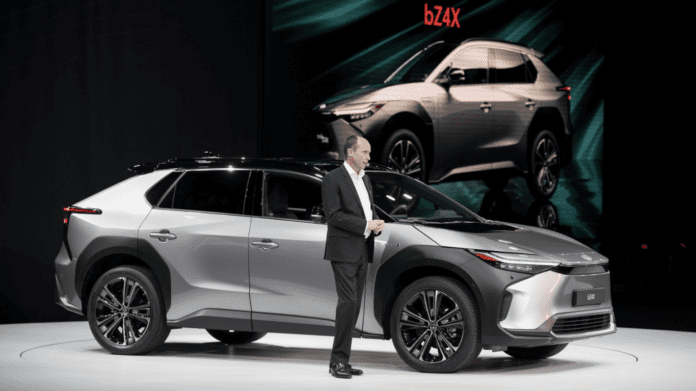At the Kenshiki event for media this week, Toyota Motor Europe (TME) communicated the latest news on its European business strategy, sharing the company’s vision, new products and technology developments. Kenshiki means insight in Japanese, and this year’s event focussed on TME’s commitment to carbon neutrality, the acceleration of its electrification plan and its active role in building a hydrogen economy.
The goal of minimizing carbon emissions will be achieved by accelerating electrification and offering a diverse range of CO2-efficient powertrain solutions to all its customers. In the coming years, Toyota will roll out an increasing number of practical and affordable zero-emissions vehicles (ZEVs) with the bZ4X being the latest model to be launched. By 2030, the ZEV sales mix is anticipated to be a minimum of 50% in Western Europe, with the capacity and capability to further increase should customer demand go even higher.
Matt Harrison, President & CEO of Toyota Motor Europe said, “Moving beyond 2030, we expect to see further ZEV demand acceleration and Toyota will be ready to achieve 100% CO2 reduction in all new vehicles by 2035 in Western Europe, assuming that sufficient electric charging and hydrogen refueling infrastructures are in place by then, together with the renewable energy capacity increases that will be required.”
Gill Pratt, TMC Chief Scientist & TRI CEO, further explained that the path to carbon neutrality is most efficiently based on diversity of powertrain solutions due to the wide diversity of markets around the world, stemming from three key factors: diverse nature of energy sources across regions, the different transportation needs of people and thirdly, the imperative to maximize the Carbon Return on Investment to ensure that use of scarce battery raw materials is optimized.
Commercial production has started on the world’s first bi-polar NiMh battery which, as well as using less precious minerals, is lower in cost with double the output density of a regular NiMh battery. By applying similar techniques to Li-Ion batteries, combined with further efficiencies in vehicle energy consumption, Toyota expects to see a 50% reduction in battery cost per vehicle, without deteriorating range, in the second half of the 2020s; thereby making battery electric vehicles more affordable and accessible. On the keenly anticipated introduction of solid-state batteries, Gerald Killmann, Vice President of TME R&D confirmed that, following prototype testing last year, they will likely be first introduced in hybrid electric vehicles before wider deployment including battery electric vehicles with the aims of delivering higher output, longer range and shorter charging times.
TME expects to deliver 1.07m vehicles in 2021, for an estimated 6.3 percent market share, an increase of 80k units compared to 2020. In 2022, TME is planning to sell around 1.3m vehicles for a 6.5% market share.






